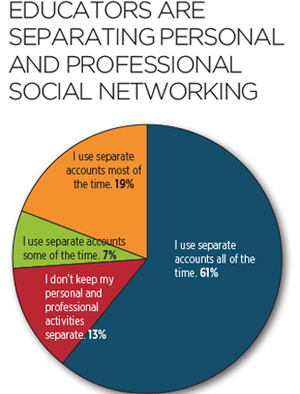Professional Development

You can call it the missing link to the true integration of technology in schools: teaching the teachers. All of the members of this working group addressed the struggles of implementing a valuable and cost-efficient PD program. Most seemed hopeful as they watch their faculty evolve. Here are some of their strategies and tools.
Q What professional development approaches are working?
We implemented a professional development program called Kyrene Teaches with Technology Program (KTTP) by starting with volunteer teacher teams willing to work with master teacher or technology specialists (also known as educational technology specialists). Team meetings were held on a regular basis where teachers could discuss the needs of their students and learn about technological tools that could help them in the classroom. The ed tech liaisons were then available to coach and support teachers as they tried new things. Over the course of five years, every teacher team in the school district participated in this program. The individual and very specific feedback that teachers receive is transforming professional development into a personalized program.
—David Schauer, superintendent, Kyrene School District, Tempe, AZ
Our summer Technology Academy for teachers is a week-long, three graduate credit course that we hold in partnership with a local university. It is the only avenue to get technology for the classroom. All technology in our district is tied to PD. In just three years we have had 100 percent voluntary participation for all of our staff.
—Paul Sanfrancesco, director of technology, Garnet Valley SD, Glen Mills, PA

‘‘We don’t pretend to know what will work for each teacher. We don’t declare that “this is the way it should be done.” we instead encourage local innovation.
—Jim Klein
Q What technologies are helping you manage or support the professional learning process?
Varied learning opportunities are needed for adults, just like they are for children. The “one-sizefits- all” approach no longer works so we offer options such as traditional, in-person classes, online classes, and book studies with teams. The iObservations tool provides short video clips that are tailored to specific feedback given to teachers that demonstrate an element of instruction. This is now the emphasis of all professional development work with teachers. School and district leaders are constantly in classrooms using this tool and it is transforming the entire culture.
—David Schauer
Tools and ideas to transform education. Sign up below.
We use the PDAS app on iPads to help administrators with walkthroughs and observations. This year, we tried our first “flipped PD” class where teachers watched videos like a flipped classroom prior to training and then came in to complete work together. This way, they would all be familiar with the technology and head straight into integration. This fall we have several courses in iTunesU and are working with neighboring districts to provide a variety of content in that program so we don’t re-invent the wheel.
—Carl Hooker, Director of Instructional Technology, Eanes Independent School District, Austin, TX
All of our teachers have district-issued laptops (HP Folios). We have many resources available to our teachers. Teachers are able to create their own ‘Khan Academy’ videos for instruction and post them to their websites and share information and successes on network folders and on our website to provide on-demand access to PD.
—Marianthe Williams, Director of Technology, River Dell Regional School District, River Edge, NJ
‘‘The importance of training principals on evaluating what is or isn’t good integration is the key. Just because a teacher has a smartboard and is showing some slides doesn’t necessarily mean they are using technology effectively.
—Carl Hooker
Where does quality teaching with technology fit in with CCSS? What expectations will there be in the coming years for teachers to teach using technology?
Being in Texas, we are not a Common Core state; however, the need for technology integration is still extremely urgent. We have stateadopted tech literacy assessments that I’ve been working with our state agencies to develop and embed. The importance of training principals on evaluating what is or isn’t good integration is the key. Just because a teacher has a smartboard and is showing some slides doesn’t necessarily mean they are using technology effectively.
—Carl Hooker, Director of Instructional Technology, Eanes Independent School District, Austin, TX
Teachers no longer need to deliver content and their role has shifted to being facilitators of learning. Science, technology, engineering, and mathematics (STEM) help our students use the inquiry process to solve problems that are relevant to the world in which we live. Learning in this way has to be experienced by the adults who are expected to facilitate this for their students. Most teachers were taught using traditional methods and may or may not have the depth of conceptual understanding and knowledge needed with this approach. Therefore, professional development that emulates what it is we want students to do with STEM is critical and quite challenging because of time and money.
—David Schauer,
The CCSS drive the need for the use of media and technology. In order for students to properly achieve these standards, the whole range of new media literacy skills and 21st century literacy skills needs to be embedded into the instructional program. There is more to technology in the CCSS than the computer adaptive assessments. Content (or traditional) skills are still required, but true mastery of the CCSS will require student to also obtain mastery in new media literacy skills.
—Dr. Themistocles Sparangis, Chief Technology Director, Los Angeles Unified School District, Los Angeles, CA
